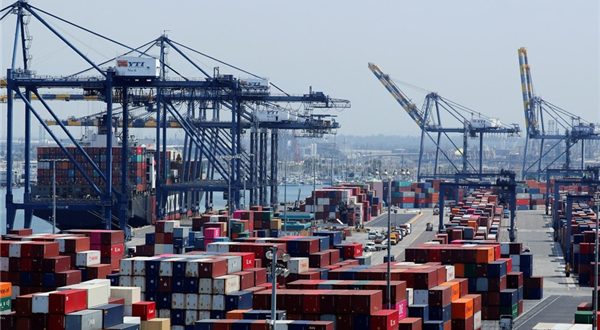Iran’s non-oil exports have out-valued the country’s imports in the second quarter of 2019 as authorities report a trade surplus of around $1.5 billion between April and June.
Tehran chamber of commerce released data on Monday suggesting that the total value of Iran’s trade in the three-month period beginning in late March. when the new Iranian calendar year started. had approached $11.5 billion.
The report said China. Iraq. Turkey. the United Arab Emirates and Afghanistan were the top importers of Iran’s goods and services in the second quarterly period.
It said Turkey imported around $2.2 billion worth of goods and services from Iran. a five-fold jump compared to the similar quarterly period in 2018.
However. it said exports to the UAE had more than halved while Afghanistan imported 32 percent less from Iran compared to the previous year.
The report said China had topped the list of countries exporting to Iran. adding that India had replaced South Korea in the group of five top exporting countries to Iran which also includes the UAE. Turkey and Germany.
Last Monday. it was announced that Some $12.2 million worth of commodities were exported from Iran`s Northwestern border crossing of Sarakhs in the first quarter of the current local calendar year (March 21-June 21). which indicated a 280% growth in comparison with the corresponding period in the year before.
Omid Jahankhah. the supervisor of Northeastern province of Khorasan Razavi’s customs office. announced on July 29 that the export of commodities from Sarakhs customs office have also grown 334% in term of weight during the three-month period.
Cement. glass. plastic products. tomato paste. biscuit. marble stone and cosmetics were the main Iranian items which were exported to Uzbekistan. Turkmenistan and Kyrgyzstan through Sarakhs customs office. he said.
Iranian officials started planning for policies to counter the US possible sanctions a year before Donald Trump entered into office in early 2017. The policies are now proving effective as economic indexes are indicating inefficacy of the US pressures.
Earlier in July. Iranian Industry Minister Reza Rahmani said that despite US efforts to cripple Tehran’s economy. year-on-year comparison shows that the country’s domestic production has increased in the first quarter of the local calendar year (March 21-June 21).
“US sanctions were imposed to hamper production in Iran. however. we are proud to announce that after 14 months of sanctions the area has grown one percent in the first three months of the present Iranian year (started on March 21) in comparison with the corresponding period in last year.` Rahmani said in Iran’s Northeastern province of North Khorasan.
`We did not let production decrease and that is a victory despite the difficulties we had under sanctions.` he added.
The minister underlined that the government seeks to increase exports under the current conditions and called for providing the ground for investors.
Heading a delegation. the Iranian President paid a one-day visit to North Khorasan in line with the government’s provincial tours and inaugurated a number of projects in the Northeastern province.
Echoing a similar sense of economic progress. earlier on July 14. Director General of Port and Maritime Organization of Hormuzgan province Allah Morad Afifipour announced that Iran’s first quarter non-oil exports from the Southern port of Shahid Rajaei have increased by 10 percent compared with corresponding period in the last year.
An increasing trend has been reported from other Iranian customs gates for the same 3-month period.
Also. on July 14. Head of Markazi Customs Administration Esmaeil Hosseini said that more than 225 million worth of non-oil commodities have been exported from the central Iranian province of Markazi in the first three months of the current local calendar year. which shows a year-on-year increase by 4%.
More than 381.479 tons of non-oil commodities have been exported from Markazi province in the 3-month period. Hosseini said.
He added that the figures show a 4% growth in terms of value and a 12% decline in terms of tonnage compared with the similar period in last year.
On July 13. the Customs Department in Iran’s Southeastern port city of Chabahar announced that the office has witnessed a 38% rise in its collections in the first 3 months of the current local calendar year. compared with the corresponding period in 2018.
 Iran Energy News Oil, Gas, Petrochemical and Energy Field Specialized Channel
Iran Energy News Oil, Gas, Petrochemical and Energy Field Specialized Channel




